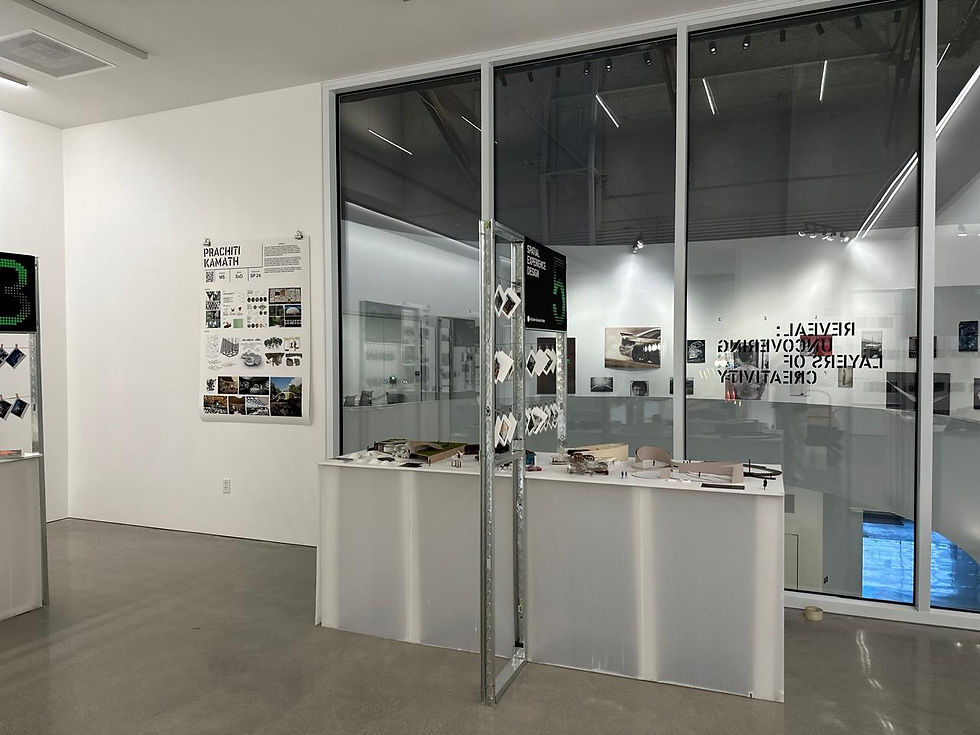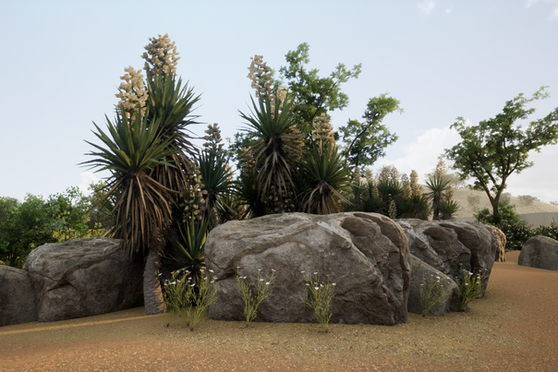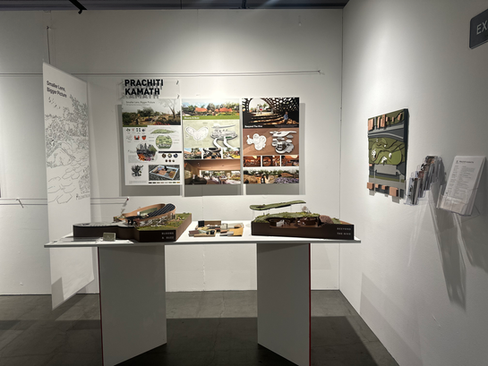Pollinatrium
Redefining Urban Ecology as a Shared Habitat

Inquiry
Our attention is naturally drawn to larger animals because they take up space in our environments and narratives, while smaller species often go unnoticed; not out of a lack of empathy, but because they exist beyond our immediate awareness. The real challenge lies in what captures our attention.
How might we design human environments and narratives that magnify the presence of pollinators, creatures essential to our ecosystems, and bring them into focus to foster deeper emotional connections with the often unseen?
This project reimagines spatial encounters through the lens of pollinators, combining play, storytelling, and sensory immersion to foster empathy for the unseen ecosystems that support us. Inspired by the delicate balance of nature and human interaction, the design blurs the lines between interior and outdoor environment, resulting in a multilayered journey of discovery. The experience unfolds like a pollinator's journey, with environments shifting in perception, allowing guests to see, feel, and navigate in the same way as bees, butterflies, and hummingbirds do. Wayfinding elements reflect flight patterns, whereas interactive interventions engage the senses, prompting curiosity and a deeper connection. As a whole, the project evolves into a living and breathing ecosystem in Los Angeles City where both human and non-humans coexist, generating a newfound respect for the intricate, hidden worlds that surround us.

Design Story

LOS ANGELES STATE HISTORIC PARK
.png)

Located at the park's entrance- Blooms and buzz introduces the park's ecosystems, emphasizing the vital roles of pollinators and native plants. Visitors also get to immerse in creating their pollinator garden and browse a curated gift shop.
The form and circulation come from the flight, an abstraction of winged species that I'm focusing on, and the circulation is inspired by their hovering experience.

Beeyond The Hive is a Native Bee Pavilion is a sensory-driven educational space designed to foster empathy and awareness of the 1600 species native bees' that live in California and their vital roles in our ecosystem.
The idea behind the form and circulation of these spaces comes from decoding the bee's life- its movement, the native bee's solitary nature, unlike the regular honey bees living in a hive, and the bee turrets- their underground individual homes.
Explore Reveal:
Thesis Process Exhibition





Renders & Walkthrough



Gallery
Process Documentation










































